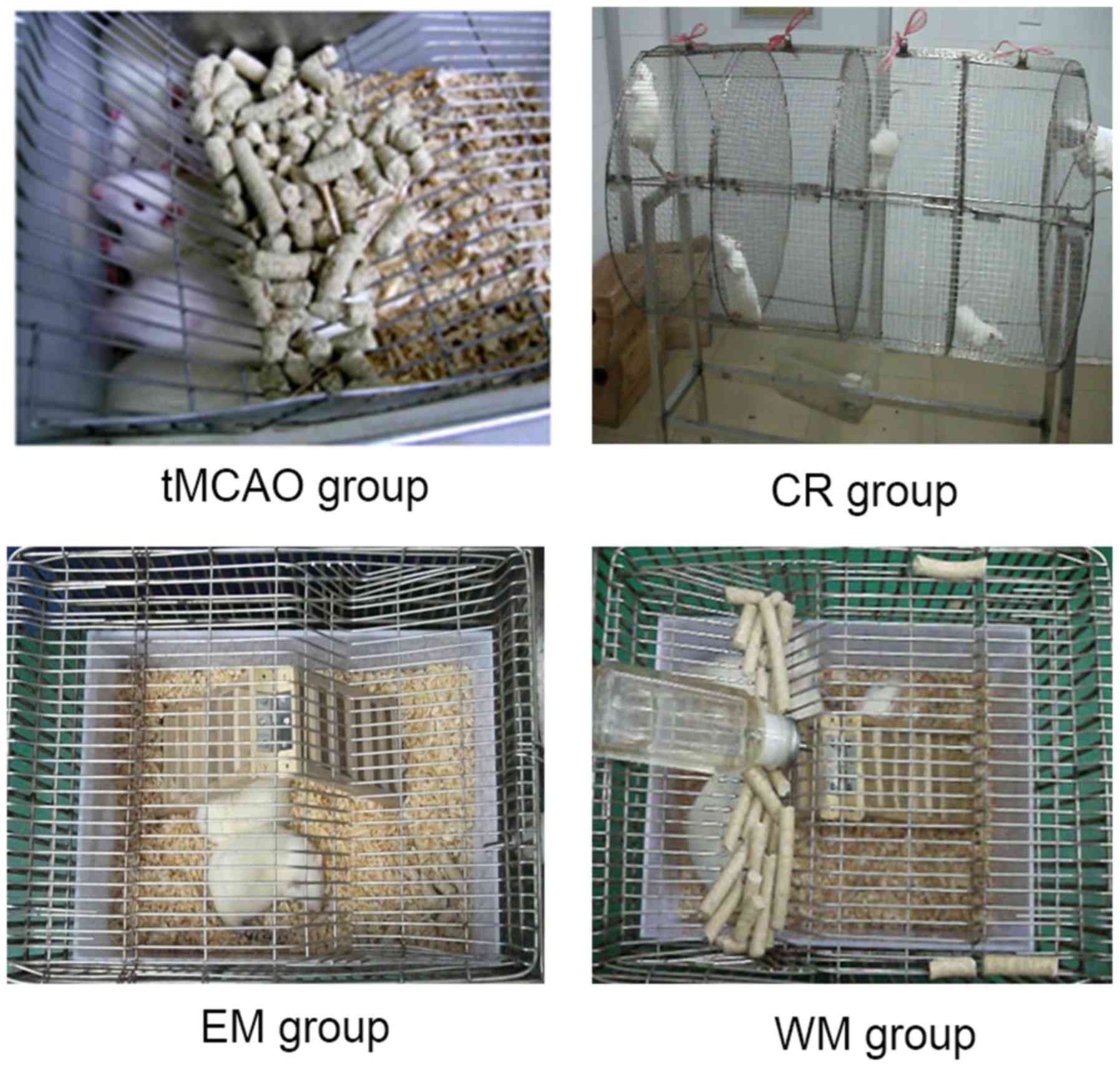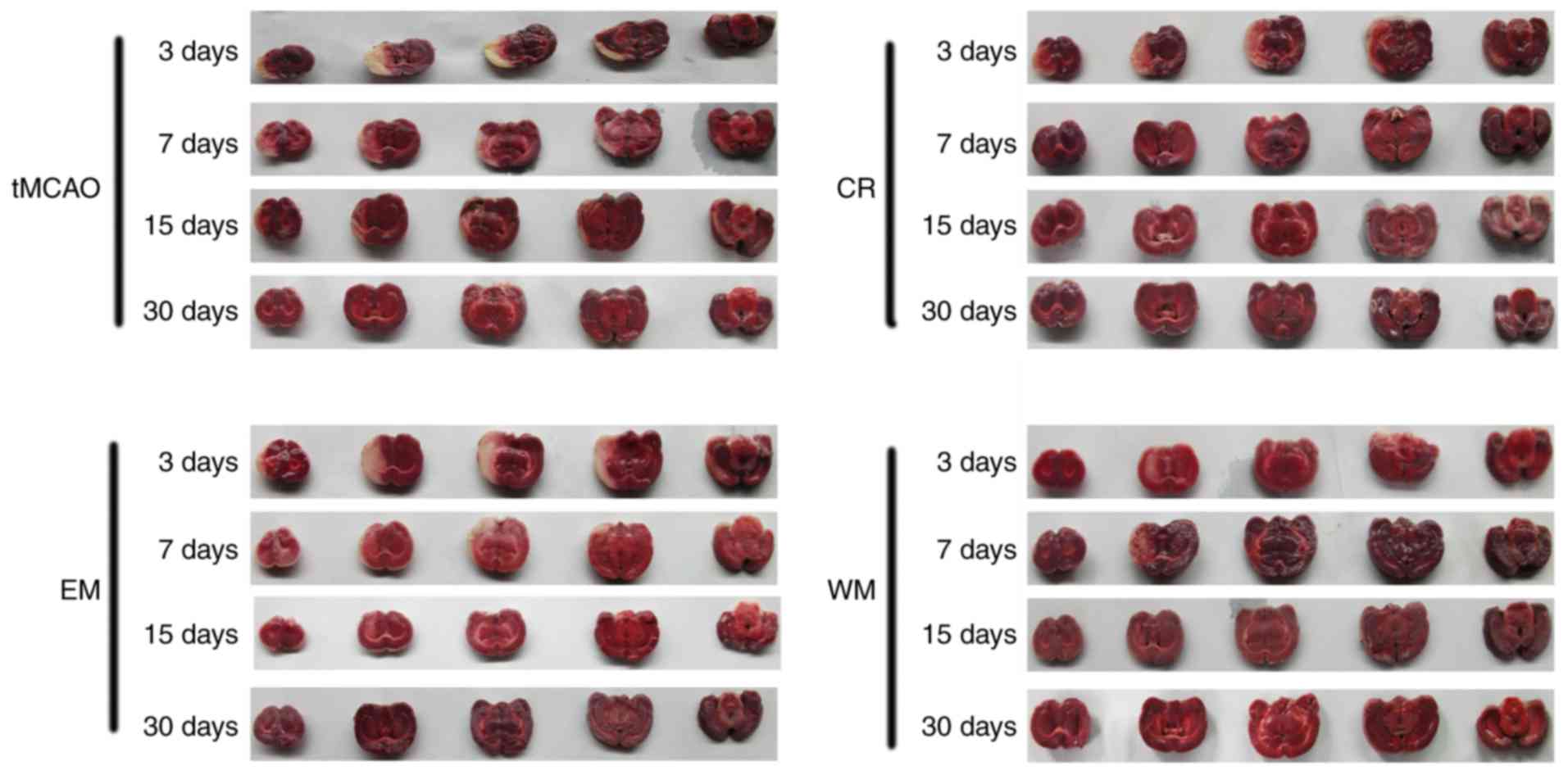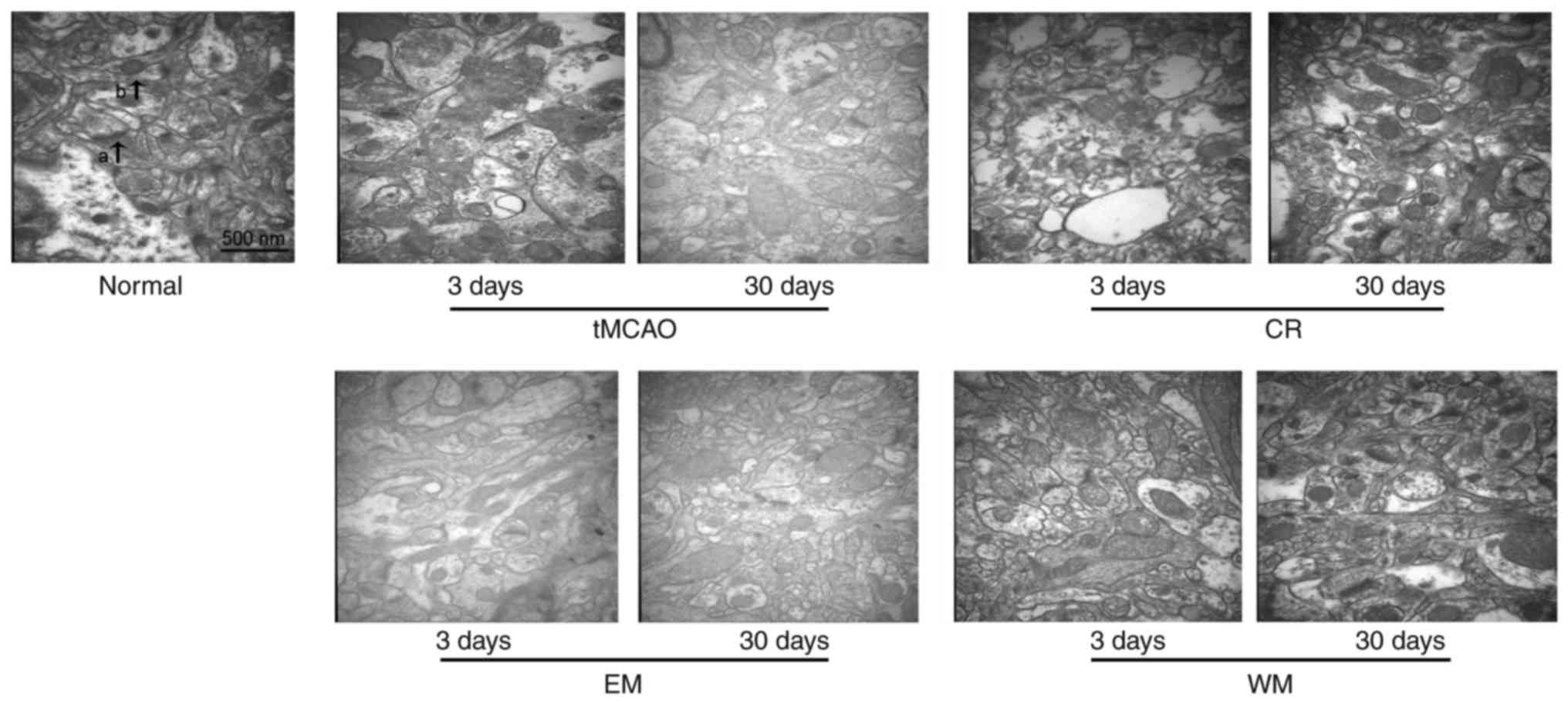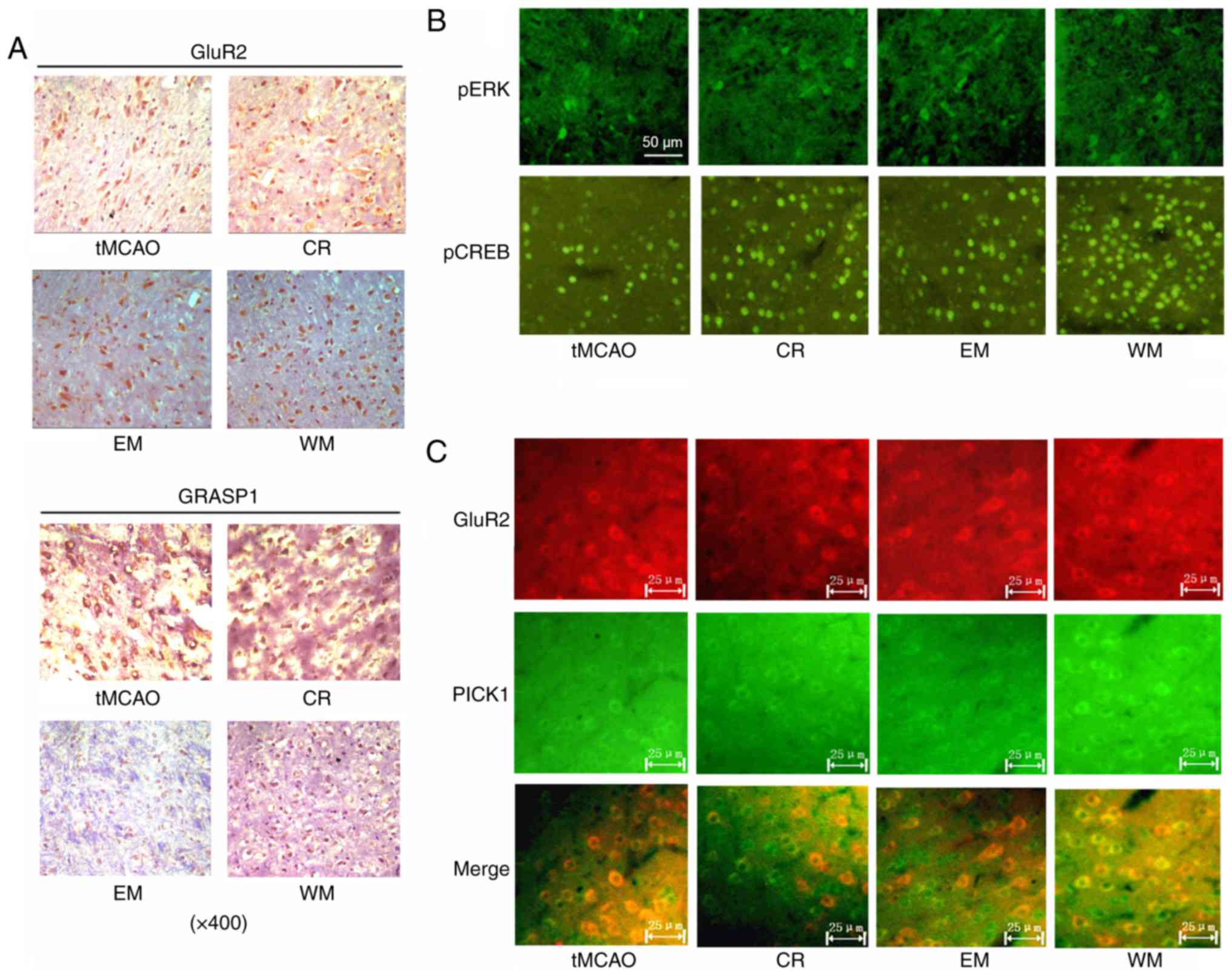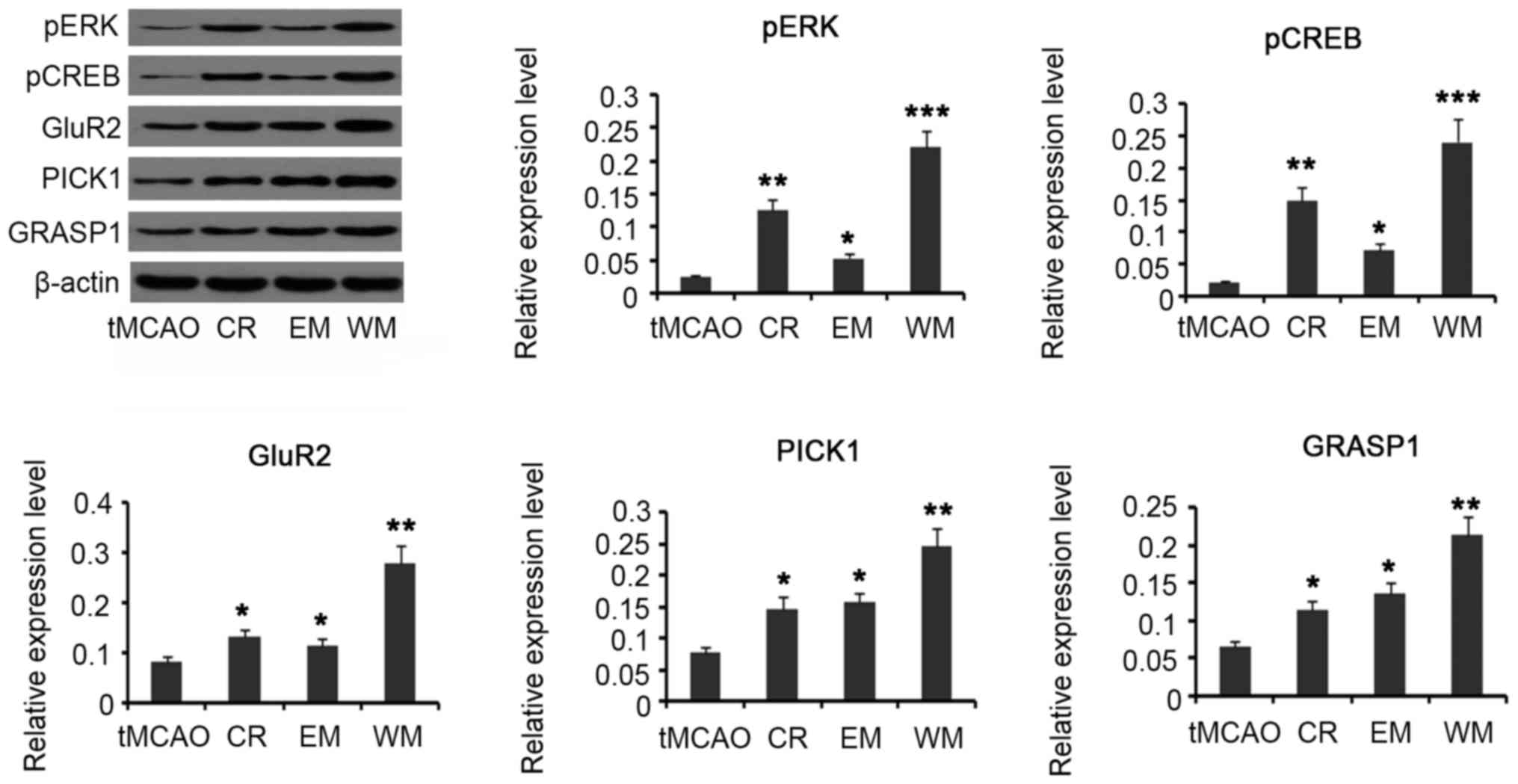|
1
|
Pan L, Song A, Duan S and Yu Z:
Patient-centered robot-aided passive neurorehabilitation exercise
based on safety-motion decision-making mechanism. Biomed Res Int.
2017:41859392017. View Article : Google Scholar : PubMed/NCBI
|
|
2
|
Chen X, Zhang X, Xue L, Hao C, Liao W and
Wan Q: Treatment with enriched environment reduces neuronal
apoptosis in the periinfarct cortex after cerebral
ischemia/reperfusion injury. Cell Physiol Biochem. 41:1445–1456.
2017. View Article : Google Scholar : PubMed/NCBI
|
|
3
|
Parker K, Berretta A, Saenger S,
Sivaramakrishnan M, Shirley SA, Metzger F and Clarkson AN:
PEGylated insulin-like growth factor-I affords protection and
facilitates recovery of lost functions post-focal ischemia. Sci
Rep. 7:2412017. View Article : Google Scholar : PubMed/NCBI
|
|
4
|
Choi DH, Ahn JH, Choi IA, Kim JH, Kim BR
and Lee J: Effect of task-specific training on Eph/ephrin
expression after stroke. BMB Rep. 49:635–640. 2016. View Article : Google Scholar : PubMed/NCBI
|
|
5
|
Sanchez-Mendoza EH and Hermann DM:
Correlates of post-stroke brain plasticity, relationship to
pathophysiological settings and implications for human
proof-of-concept studies. Front Cell Neurosci. 10:1962016.
View Article : Google Scholar : PubMed/NCBI
|
|
6
|
Tang QP, Shen Q, Wu LX, Feng XL, Liu H, Wu
B, Huang XS, Wang GQ, Li ZH and Liu ZJ: STAT3 signal that mediates
the neural plasticity is involved in willed-movement training in
focal ischemic rats. J Zhejiang Univ Sci B. 17:493–502. 2016.
View Article : Google Scholar : PubMed/NCBI
|
|
7
|
Ye Y, Zhao Z, Xu H, Zhang X, Su X, Yang Y,
Yu X and He X: Activation of sphingosine 1-phosphate receptor 1
enhances hippocampus neurogenesis in a rat model of traumatic brain
injury: An involvement of MEK/Erk signaling pathway. Neural Plast.
2016:80721562016. View Article : Google Scholar : PubMed/NCBI
|
|
8
|
Liu L, Zhu J, Zhou L and Wan L: RACK1
promotes maintenance of morphine-associated memory via activation
of an ERK-CREB dependent pathway in hippocampus. Sci Rep.
6:201832016. View Article : Google Scholar : PubMed/NCBI
|
|
9
|
Li Y, Li X, Guo C, Li L, Wang Y, Zhang Y,
Chen Y, Liu W and Gao L: Long-term neurocognitive dysfunction in
offspring via NGF/ERK/CREB signaling pathway caused by ketamine
exposure during the second trimester of pregnancy in rats.
Oncotarget. 8:30956–30970. 2017.PubMed/NCBI
|
|
10
|
Qu H, Zhao M, Zhao S, Xiao T, Tang X, Zhao
D, Jolkkonen J and Zhao C: Forced limb-use enhances brain
plasticity through the cAMP/PKA/CREB signal transduction pathway
after stroke in adult rats. Restor Neurol Neurosci. 32:597–609.
2014.PubMed/NCBI
|
|
11
|
Li H, Wang J, Wang P, Rao Y and Chen L:
Resveratrol reverses the synaptic plasticity deficits in a chronic
cerebral hypoperfusion rat model. J Stroke Cerebrovasc Dis.
25:122–128. 2016. View Article : Google Scholar : PubMed/NCBI
|
|
12
|
Pregi N, Belluscio LM, Berardino BG,
Castillo DS and Cánepa ET: Oxidative stress-induced CREB
upregulation promotes DNA damage repair prior to neuronal cell
death protection. Mol Cell Biochem. 425:9–24. 2017. View Article : Google Scholar : PubMed/NCBI
|
|
13
|
Isaac JT, Ashby MC and McBain CJ: The role
of the GluR2 subunit in AMPA receptor function and synaptic
plasticity. Neuron. 54:859–871. 2007. View Article : Google Scholar : PubMed/NCBI
|
|
14
|
Dixon RM, Mellor JR and Hanley JG:
PICK1-mediated glutamate receptor subunit 2 (GluR2) trafficking
contributes to cell death in oxygen/glucose-deprived hippocampal
neurons. J Biol Chem. 284:14230–14235. 2009. View Article : Google Scholar : PubMed/NCBI
|
|
15
|
Hanley JG: Actin-dependent mechanisms in
AMPA receptor trafficking. Front Cell Neurosci. 8:3812014.
View Article : Google Scholar : PubMed/NCBI
|
|
16
|
Bakshi K, Kosciuk M, Nagele RG, Friedman E
and Wang HY: Prenatal cocaine exposure increases synaptic
localization of a neuronal RasGEF, GRASP-1 via hyperphosphorylation
of AMPAR anchoring protein, GRIP. PLoS One. 6:e250192011.
View Article : Google Scholar : PubMed/NCBI
|
|
17
|
Hoogenraad CC and van der Sluijs P:
GRASP-1 regulates endocytic receptor recycling and synaptic
plasticity. Commun Integr Biol. 3:433–435. 2010. View Article : Google Scholar : PubMed/NCBI
|
|
18
|
Ye B, Yu WP, Thomas GM and Huganir RL:
GRASP-1 is a neuronal scaffold protein for the JNK signaling
pathway. FEBS Lett. 581:4403–4410. 2007. View Article : Google Scholar : PubMed/NCBI
|
|
19
|
Chiu SL, Diering GH, Ye B, Takamiya K,
Chen CM, Jiang Y, Niranjan T, Schwartz CE, Wang T and Huganir RL:
GRASP1 regulates synaptic plasticity and learning through endosomal
recycling of AMPA receptors. Neuron. 93:1405–1419.e8. 2017.
View Article : Google Scholar : PubMed/NCBI
|
|
20
|
Institute for Laboratory Animal
ResearchGuide for the care and use of laboratory animals. 8th
edition. Washington (DC): National Academies Press; 2011,
PubMed/NCBI
|
|
21
|
Tang Q, Yang Q, Hu Z, Liu B, Shuai J, Wang
G, Liu Z, Xia J and Shen X: The effects of willed movement therapy
on AMPA receptor properties for adult rat following focal cerebral
ischemia. Behav Brain Res. 181:254–261. 2007. View Article : Google Scholar : PubMed/NCBI
|
|
22
|
Andrabi SS, Parvez S and Tabassum H:
Progesterone induces neuroprotection following reperfusion-promoted
mitochondrial dysfunction after focal cerebral ischemia in rats.
Dis Model Mech. 10:787–796. 2017. View Article : Google Scholar : PubMed/NCBI
|
|
23
|
Shu S, Li CM, You YL, Qian XL, Zhou S and
Ling CQ: Electroacupuncture ameliorates cerebral
ischemia-reperfusion injury by regulation of autophagy and
apoptosis. Evid Based Complement Alternat Med. 2016:72974252016.
View Article : Google Scholar : PubMed/NCBI
|
|
24
|
Chen L, Wang X, Zhang J, Dang C, Liu G,
Liang Z, Huang G, Zhao W and Zeng J: Tongxinluo enhances
neurogenesis and angiogenesis in peri-infarct area and
subventricular zone and promotes functional recovery after focal
cerebral ischemic infarction in hypertensive rats. Evid Based
Complement Alternat Med. 2016:85495902016. View Article : Google Scholar : PubMed/NCBI
|
|
25
|
Cheng Y, Wei H, Sun R, Tian Z and Zheng X:
Rapid method for protein quantitation by Bradford assay after
elimination of the interference of polysorbate 80. Anal Biochem.
494:37–39. 2016. View Article : Google Scholar : PubMed/NCBI
|
|
26
|
Fu J, Wang H, Deng L and Li J: Exercise
training promotes functional recovery after spinal cord injury.
Neural Plast. 2016:40395802016. View Article : Google Scholar : PubMed/NCBI
|
|
27
|
Cheng A, Hou Y and Mattson MP:
Mitochondria and neuroplasticity. ASN Neuro. 2:e000452010.
View Article : Google Scholar : PubMed/NCBI
|
|
28
|
Nie J, Yang X, Tang Q, Shen Q and Li S:
Willed-movement training reduces brain damage and enhances synaptic
plasticity related proteins synthesis after focal ischemia. Brain
Res Bull. 120:90–96. 2016. View Article : Google Scholar : PubMed/NCBI
|
|
29
|
Ploughman M, Granter-Button S, Chernenko
G, Attwood Z, Tucker BA, Mearow KM and Corbett D: Exercise
intensity influences the temporal profile of growth factors
involved in neuronal plasticity following focal ischemia. Brain
Res. 1150:207–216. 2007. View Article : Google Scholar : PubMed/NCBI
|
|
30
|
Tang Q, Tan L, Yang X, Shen Q, Huang X,
Wang G, Chen H, Nie J, Li S and Wu L: Willed-movement training
reduces motor deficits and induces a PICK1-dependent LTD in rats
subjected to focal cerebral ischemia. Behav Brain Res. 256:481–487.
2013. View Article : Google Scholar : PubMed/NCBI
|



